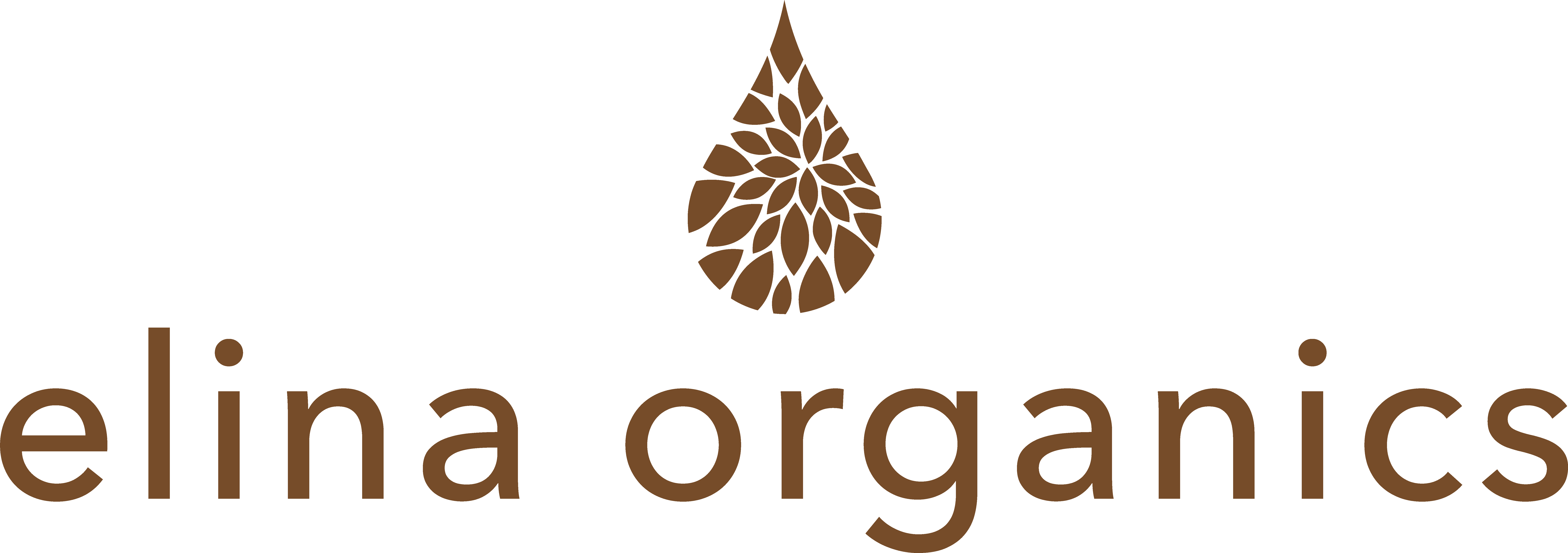Posted by Elina Fedotova on Aug 1st 2022
True Color - Using Low-Level Laser Light Therapy in Skincare Practices for All Complexions
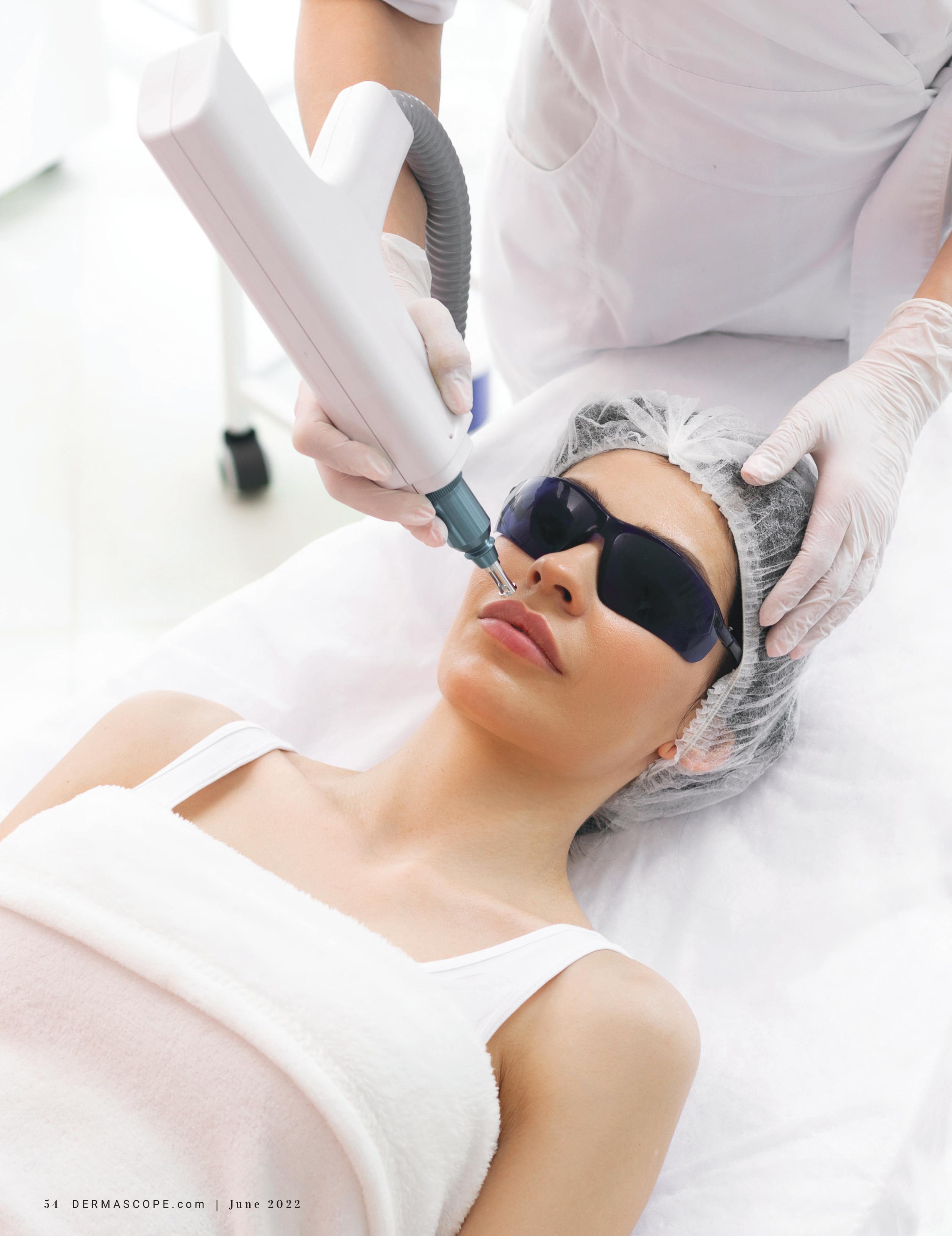
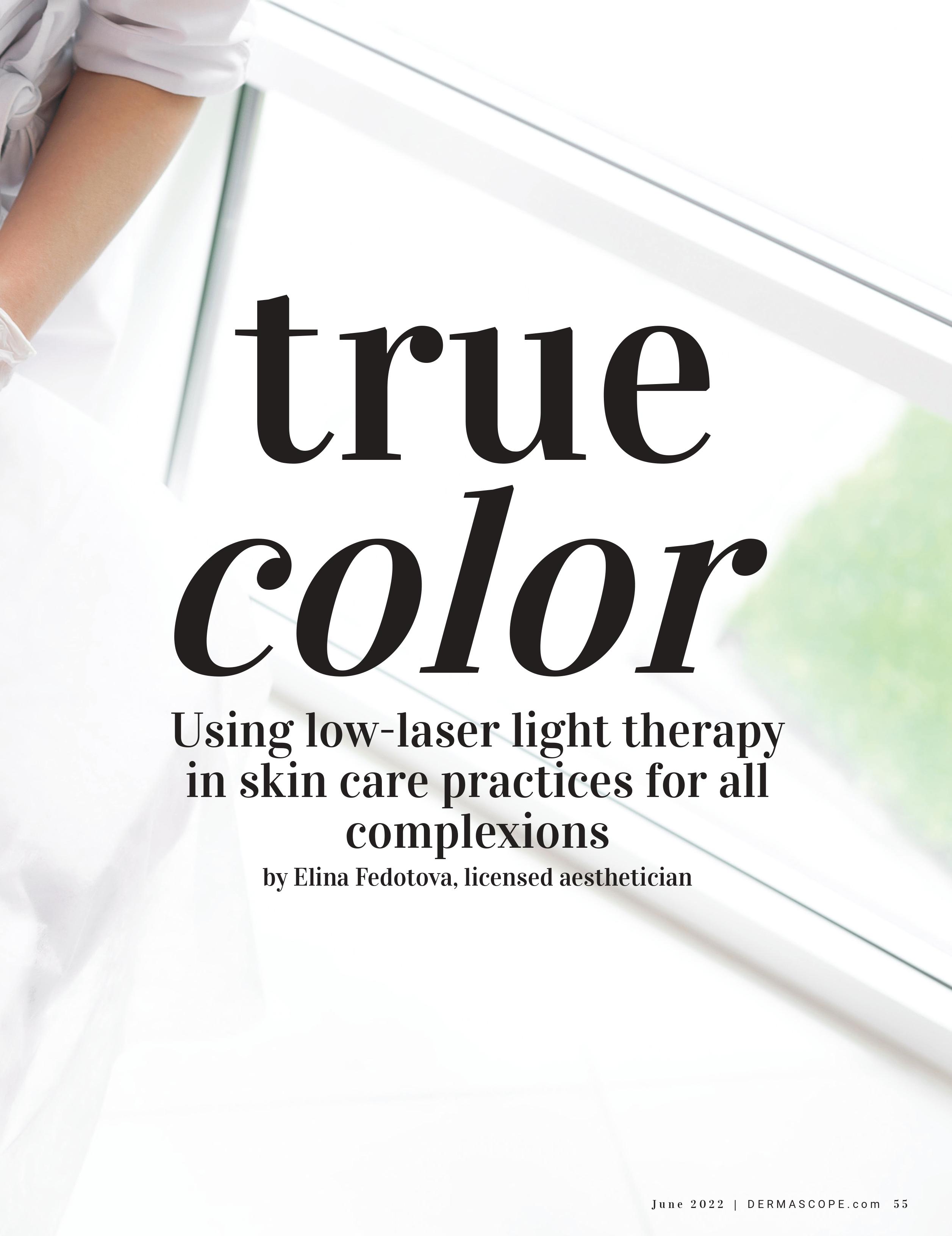
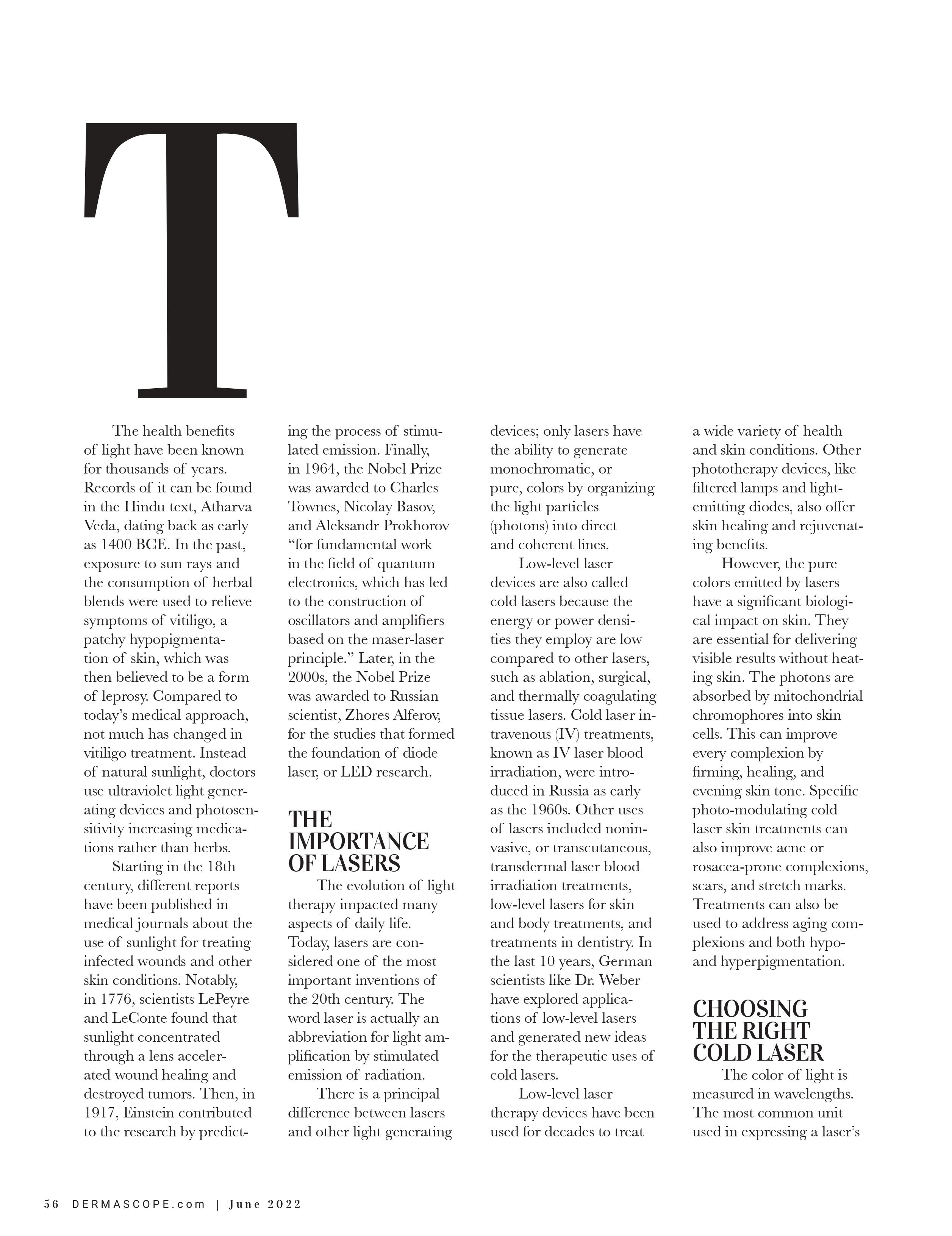
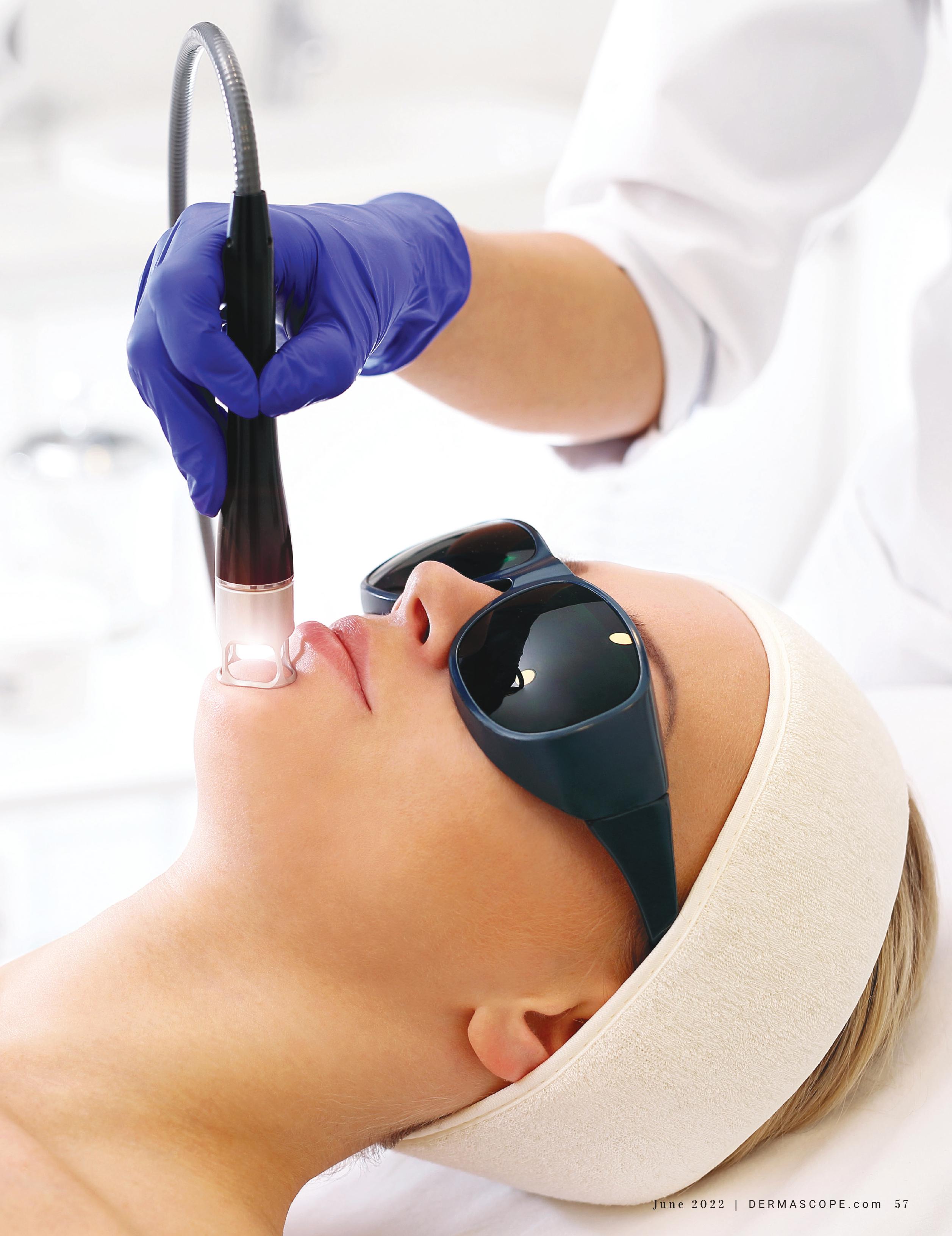

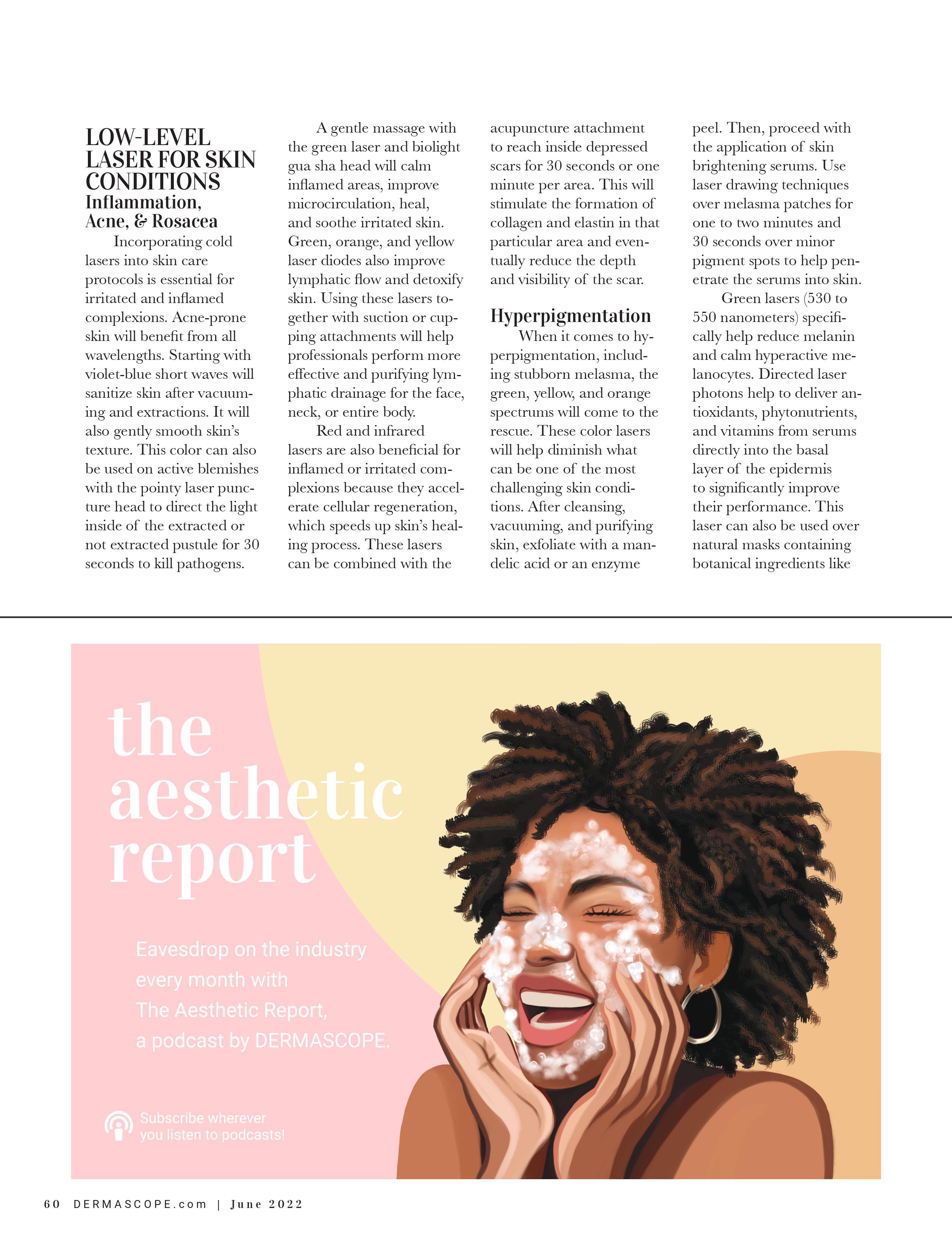

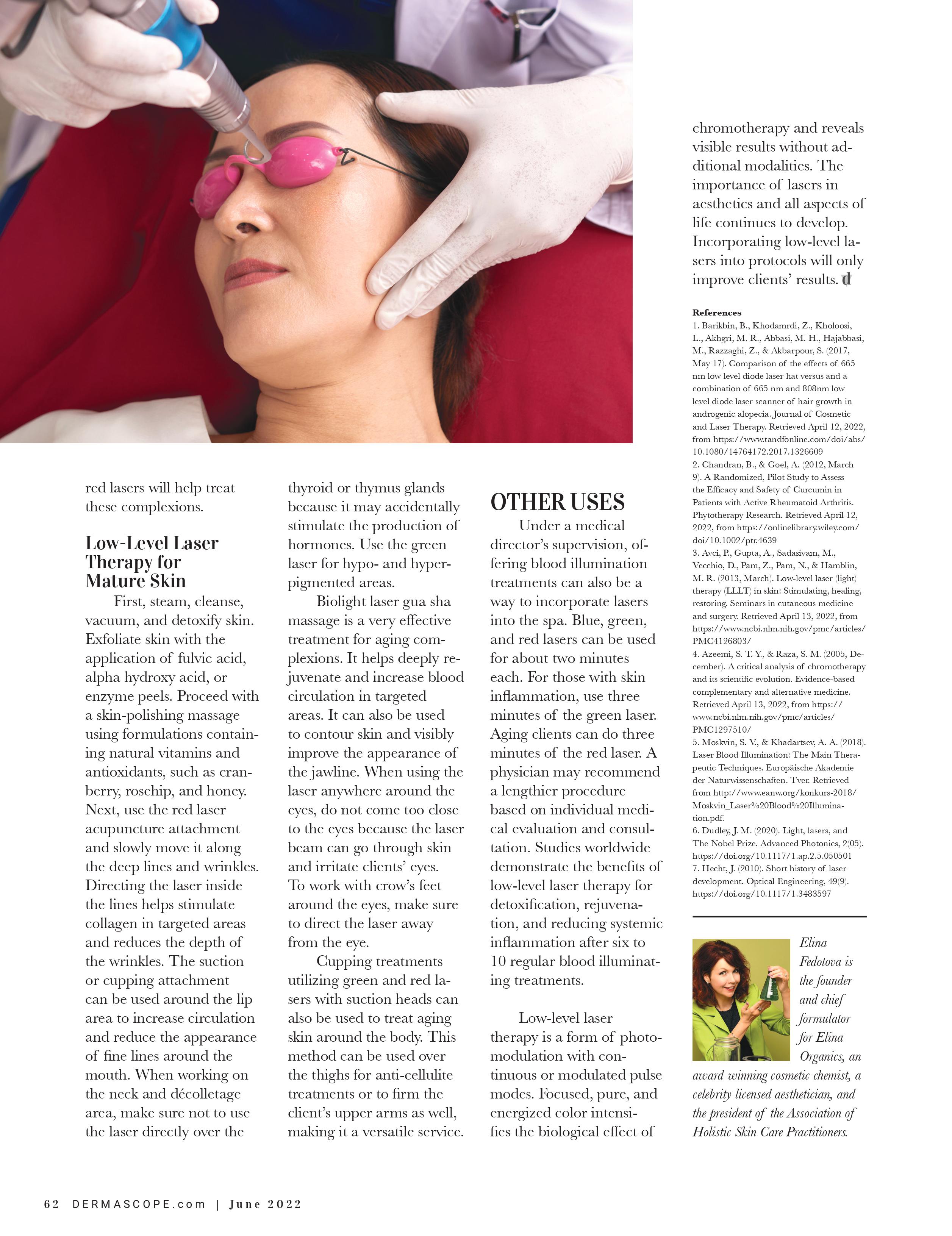 Written by Elina Fedotova, Licensed Aesthetician, for DERMASCOPE Magazine, June 2022
Written by Elina Fedotova, Licensed Aesthetician, for DERMASCOPE Magazine, June 2022
The health benefits of light have been known for thousands of years. Records of it can be found in the Hindu text, Atharva Veda, dating back as early as 1400 BCE. In the past, exposure to sun rays and the consumption of herbal blends were used to relieve symptoms of vitiligo, a patchy hypopigmentation of skin, which was then believed to be a form of leprosy. Compared to today’s medical approach, not much has changed in vitiligo treatment. Instead of natural sunlight, doctors use ultraviolet light generating devices and photosensitivity increasing medications rather than herbs.
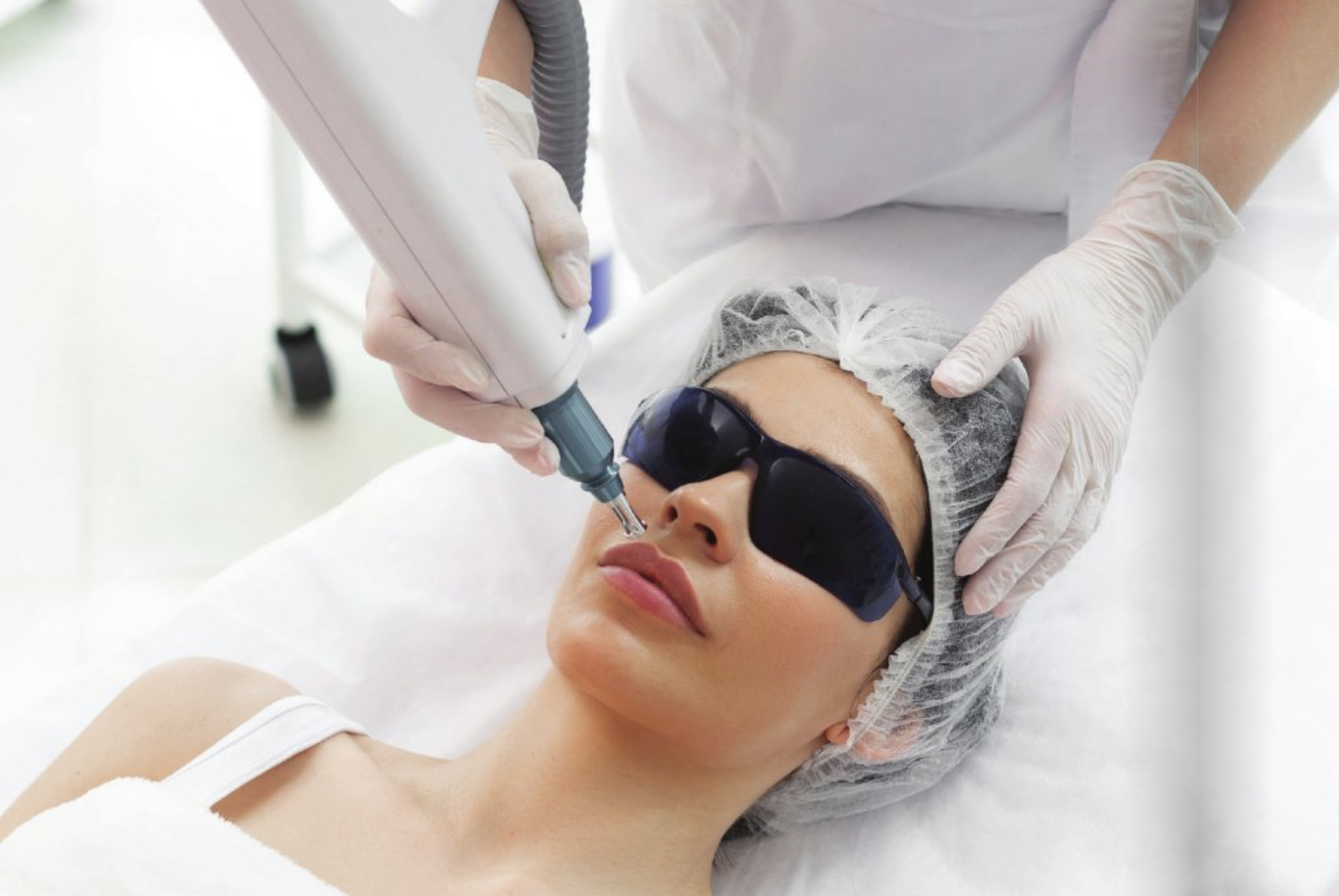
Starting in the 18th century, different reports have been published in medical journals about the use of sunlight for treating infected wounds and other skin conditions. Notably, in 1776, scientists LePeyre and LeConte found that sunlight concentrated through a lens accelerated wound healing and destroyed tumors. Then, in 1917, Einstein contributed to the research by predicting the process of stimulated emission. Finally, in 1964, the Nobel Prize was awarded to Charles Townes, Nicolay Basov, and Aleksandr Prokhorov “for fundamental work in the field of quantum electronics, which has led to the construction of oscillators and amplifiers based on the maser-laser principle.” Later, in the 2000s, the Nobel Prize was awarded to Russian scientist, Zhores Alferov, for the studies that formed the foundation of diode laser, or LED research.
THE IMPORTANCE OF LASERS
The evolution of light therapy impacted many aspects of daily life. Today, lasers are considered one of the most important inventions of the 20th century. The word laser is actually an abbreviation for light amplification by stimulated emission of radiation.
There is a principal difference between lasers and other light generating devices; only lasers have the ability to generate monochromatic, or pure, colors by organizing the light particles (photons) into direct and coherent lines.
Low-level laser devices are also called cold lasers because the energy or power densities they employ are low compared to other lasers, such as ablation, surgical, and thermally coagulating tissue lasers. Cold laser intravenous (IV) treatments, known as IV laser blood irradiation, were introduced in Russia as early as the 1960s. Other uses of lasers included noninvasive, or transcutaneous, transdermal laser blood irradiation treatments, low-level lasers for skin and body treatments, and treatments in dentistry. In the last 10 years, German scientists like Dr. Weber have explored applications of low-level lasers and generated new ideas for the therapeutic uses of cold lasers.
Low-level laser therapy devices have been used for decades to treat a wide variety of health and skin conditions. Other phototherapy devices, like filtered lamps and light-emitting diodes, also offer skin healing and rejuvenating benefits.
However, the pure colors emitted by lasers have a significant biological impact on skin. They are essential for delivering visible results without heating skin. The photons are absorbed by mitochondrial chromophores into skin cells. This can improve every complexion by firming, healing, and evening skin tone. Specific photo-modulating cold laser skin treatments can also improve acne or rosacea-prone complexions, scars, and stretch marks. Treatments can also be used to address aging complexions and both hypo- and hyperpigmentation.

CHOOSING THE RIGHT COLD LASER
The color of light is measured in wavelengths. The most common unit used in expressing a laser’s wavelength is a nanometer. There are one billion nanometers in one meter.
Violet & Blue Spectrum (410 to 445 nanometers). Violet-blue chromotherapy devices have a shorter wavelength and work on top of skin. They reduce sebum and bacteria production, which helps to treat acne, inflammation, and rosacea. Violet-blue devices can be used to sanitize skin after extractions, especially for oily, acne, and rosacea-prone complexions.
Green & Yellow Spectrum (525 to 580 nanometers). Green and yellow laser devices use a slightly longer wavelength to target melanin-producing cells, or melanocytes, which inhibits excess melanin production and reduces hyperpigmentation. This will minimize the appearance of dark spots and even the complexion.
Red & Infrared Spectrum (635 to 904 nanometers). Red and infrared low-level lasers can reach deeper layers of skin. Studies have shown that red light devices benefit every complexion, especially those that are aging. Red lasers reduce wrinkles by rejuvenating and firming skin through tissue regeneration, specifically collagen and elastin. They also have powerful antioxidant effects. These lasers have been used specifically for preventing and reducing hair loss and regrowing hair follicles. Studies have shown that in 10 of 11 studies, people with alopecia demonstrated significant improvement after being treated with 665- and 808-nanometer low-level lasers.1
THERAPY PREPARATION
Before even unpacking a new laser, practitioners should make sure to have protective glasses for themselves, their clients, and anyone who happens to be in the treatment room while the laser is being used. Safety glasses should indicate protection for the specific wavelength of the laser. Protective glasses with coverage from 200 to 2000 nanometers are ideal. With lasers, it is imperative that protective eyewear is used. The most dangerous laser colors for unprotected eyes are green and blue.
Exposure time on one area, or zone, and total duration of the procedure is measured in minutes. This is an extremely important parameter to follow. Total duration of the low-level laser therapy treatment for the entire body is not to exceed 30 minutes a day unless there is a specific medical protocol to follow for the client. Suggested treatment for one zone usually ranges from one to five minutes.
For professional skin care treatments, laser devices can be used with specific attachments, or heads. The use of cold lasers with specific heads can create a synergetic impact and intensify results in a specific area. Cold lasers can be used during facials to stimulate restoring processes in living skin cells, increase blood flow, and improve intercellular communication. Photo- modulating light can also be used with skin suction, used to perform laser puncture or laser wrinkle drawing, and even with biolight gua sha massage to firm skin.
Laser treatments can be enhanced by combining them with a topical application of specific natural serums, lotions, and creams. While the photons penetrate skin, they will help deliver the products into different layers of skin depending on the wavelength being used. It is essential to never use two different colored lasers simultaneously. Violet-blue, which has a shorter wavelength, is a good place to start, followed by longer waves that can penetrate deeper skin layers.

LOW-LEVEL LASER FOR SKIN CONDITIONS
Inflammation, Acne, & Rosacea
Incorporating cold lasers into skin care protocols is essential for irritated and inflamed complexions. Acne-prone skin will benefit from all wavelengths. Starting with violet-blue short waves will sanitize skin after vacuuming and extractions. It will also gently smooth skin’s texture. This color can also be used on active blemishes with the pointy laser puncture head to direct the light inside of the extracted or not extracted pustule for 30 seconds to kill pathogens.
A gentle massage with the green laser and biolight gua sha head will calm inflamed areas, improve microcirculation, heal, and soothe irritated skin. Green, orange, and yellow laser diodes also improve lymphatic flow and detoxify skin. Using these lasers together with suction or cupping attachments will help professionals perform more effective and purifying lymphatic drainage for the face, neck, or entire body.
Red and infrared lasers are also beneficial for inflamed or irritated complexions because they accelerate cellular regeneration, which speeds up skin’s healing process. These lasers can be combined with the acupuncture attachment to reach inside depressed scars for 30 seconds or one minute per area. This will stimulate the formation of collagen and elastin in that particular area and eventually reduce the depth and visibility of the scar.
Hyperpigmentation
When it comes to hyperpigmentation, including stubborn melasma, the green, yellow, and orange spectrums will come to the rescue. These color lasers will help diminish what can be one of the most challenging skin conditions. After cleansing, vacuuming, and purifying skin, exfoliate with a mandelic acid or an enzyme peel. Then, proceed with the application of skin brightening serums. Use laser drawing techniques over melasma patches for one to two minutes and 30 seconds over minor pigment spots to help penetrate the serums into skin.
Green lasers (530 to 550 nanometers) specifically help reduce melanin and calm hyperactive melanocytes. Directed laser photons help to deliver antioxidants, phytonutrients, and vitamins from the serum directly into the basal layer of the epidermis to significantly improve their performance. This laser can also be used over natural masks containing botanical ingredients like turmeric, green tea, and extracts of mushrooms. The active compound in turmeric, called curcumin, specifically helps suppress melanocytes’ ability to create melanin.2 Similar studies have proven antioxidants help restore skin after oxidative stress caused by ultraviolet exposure. As an added bonus, green lasers also stimulate the production of endorphins, which helps to improve mood, reduce stress, and reduce cravings of comfort foods.
After using the green, yellow, or orange lasers over the hyperpigmented areas, proceed with a gua sha massage, using infrared spectrum lasers to stimulate skin regeneration, antioxidant activity, and firm skin. Performing this massage with moisturizers or nourishing oil blends containing antioxidants, omega fatty acids, and oil-soluble vitamins will rejuvenate skin further. Make sure that the use of lasers during the facial treatment does not exceed 25 minutes.
AGING COMPLEXIONS
Sun damage appears with aging because, year after year, an individual experiences more sun exposure. Usually, this is accompanied by fine lines, wrinkles, and discoloration with hypo- or hyperpigmented areas. Using green, yellow, orange, and red lasers will help treat these complexions.

Low-Level Laser Therapy for Mature Skin
First, steam, cleanse, vacuum, and detoxify skin. Exfoliate skin with the application of fulvic acid, alpha hydroxy acid, or enzyme peels. Proceed with a skin-polishing massage using formulations containing natural vitamins and antioxidants, such as cranberry, rosehip, and honey. Next, use the red laser acupuncture attachment and slowly move it along the deep lines and wrinkles. Directing the laser inside the lines helps stimulate collagen in targeted areas and reduces the depth of the wrinkles. The suction or cupping attachment can be used around the lip area to increase circulation and reduce the appearance of fine lines around the mouth. When working on the neck and décolletage area, make sure not to use the laser directly over the thyroid or thymus glands because it may accidentally stimulate the production of hormones. Use the green laser for hypo- and hyperpigmented areas.
Biolight laser gua sha massage is a very effective treatment for aging complexions. It helps deeply rejuvenate and increase blood circulation in targeted areas. It can also be used to contour skin and visibly improve the appearance of the jawline. When using the laser anywhere around the eyes, do not come too close to the eyes because the laser beam can go through skin and irritate clients’ eyes. To work with crow’s feet around the eyes, make sure to direct the laser away from the eye.
Cupping treatments utilizing green and red lasers with suction heads can also be used to treat aging skin around the body. This method can be used over the thighs for anti-cellulite treatments or to firm the client’s upper arms as well.
OTHER USES
Under a medical director’s supervision, offering blood illumination treatments can also be a way to incorporate lasers into the spa. Blue, green, and red lasers can be used for about two minutes each. For those with skin inflammation, use three minutes of the green laser. Aging clients can do three minutes of the red laser. A physician may recommend a lengthier procedure based on individual medical evaluation and consultation. Studies worldwide demonstrate the benefits of low-level laser therapy for detoxification, rejuvenation, and reducing systemic inflammation after six to 10 regular blood illuminating treatments.
Low-level laser therapy is a form of photo-modulation with continuous or modulated pulse modes. Focused, pure, and energized color intensifies the biological effect of chromotherapy and reveals visible results without additional modalities. The importance of lasers in aesthetics and all aspects of life continues to develop. Incorporating low-level lasers into protocols will only improve clients’ results.
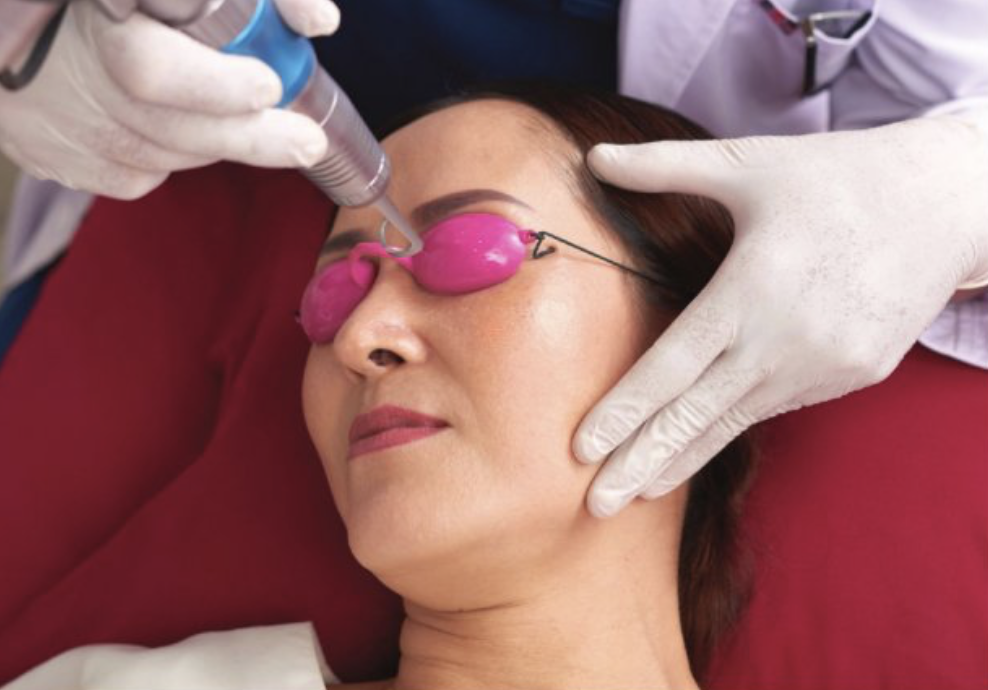
References:
1. Barikbin, B., Khodamrdi, Z., Kholoosi, L., Akhgri, M. R., Abbasi, M. H., Hajabbasi, M., Razzaghi, Z., & Akbarpour, S. (2017, May 17). Comparison of the effects of 665 nm low level diode laser hat versus and a combination of 665 nm and 808nm low level diode laser scanner of hair growth in androgenic alopecia. Journal of Cosmetic and Laser Therapy. Retrieved April 12, 2022, from https://www.tandfonline.com/doi/abs/10.1080/147641...
2. Chandran, B., & Goel, A. (2012, March 9). A Randomized, Pilot Study to Assess the Efficacy and Safety of Curcumin in Patients with Active Rheumatoid Arthritis. Phytotherapy Research. Retrieved April 12, 2022, from https://onlinelibrary.wiley.com/doi/10.1002/ptr.4...
3. Avci, P., Gupta, A., Sadasivam, M., Vecchio, D., Pam, Z., Pam, N., & Hamblin, M. R. (2013, March). Low-level laser (light) therapy (LLLT) in skin: Stimulating, healing, restoring. Seminars in cutaneous medicine and surgery. Retrieved April 13, 2022, from https://www.ncbi.nlm.nih.gov/pmc/articles/PMC4126...
4. Azeemi, S. T. Y., & Raza, S. M. (2005, December). A critical analysis of chromotherapy and its scientific evolution. Evidence-based complementary and alternative medicine. Retrieved April 13, 2022, from https://www.ncbi.nlm.nih.gov/pmc/articles/PMC1297...
5. Moskvin, S. V., & Khadartsev, A. A. (2018). Laser Blood Illumination: The Main Therapeutic Techniques. Europäische Akademie der Naturwissenschaften. Tver. Retrieved from http://www.eanw.org/konkurs- 2018/Moskvin_Laser%20Blood%20Illumination.pdf.
6. Dudley, J. M. (2020). Light, lasers, and The Nobel Prize. Advanced Photonics, 2(05). https://doi.org/10.1117/1.ap.2.5.050501
7. Hecht, J. (2010). Short history of laser development. Optical Engineering, 49(9). https://doi.org/10.1117/1.3483597
